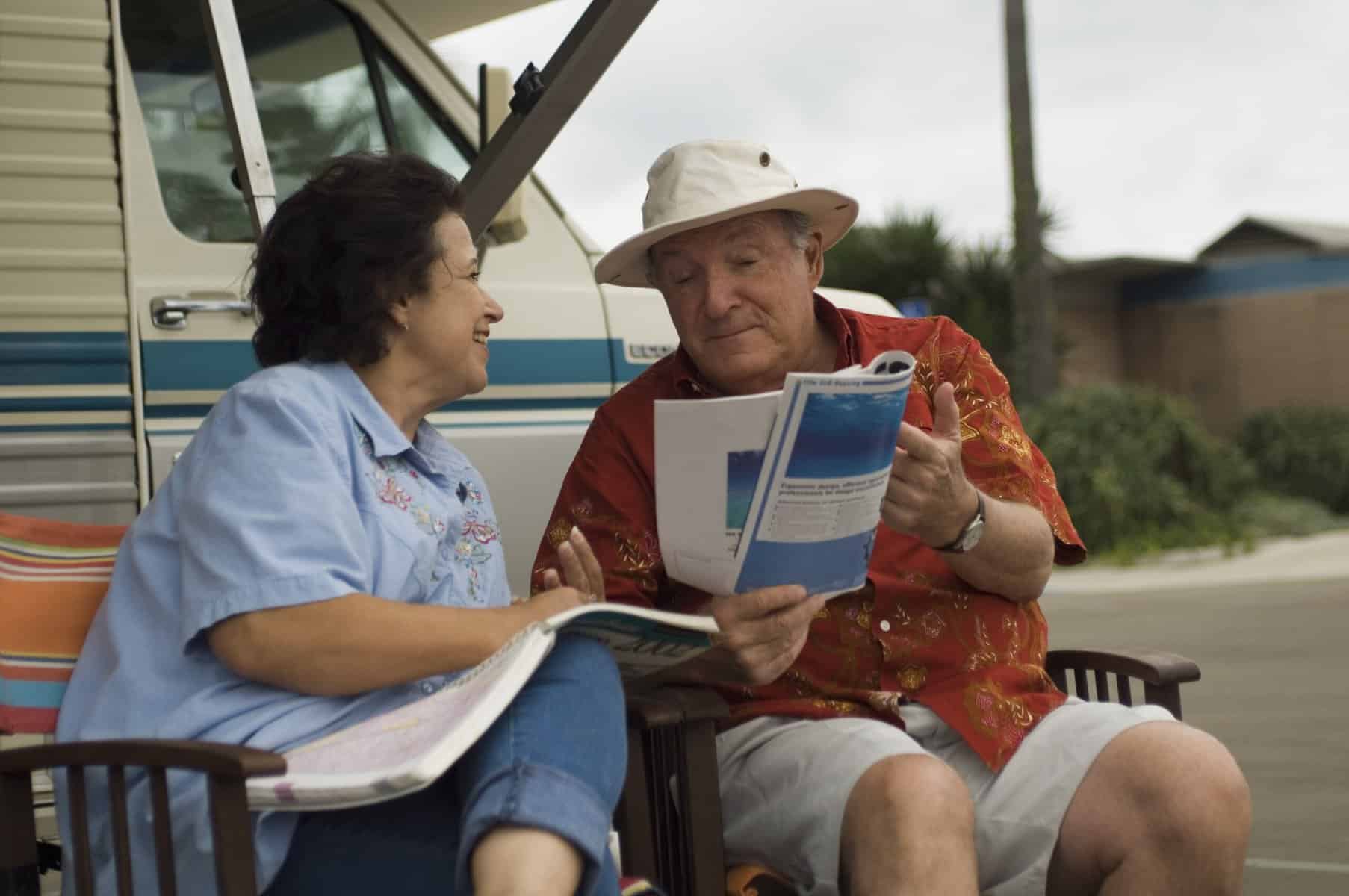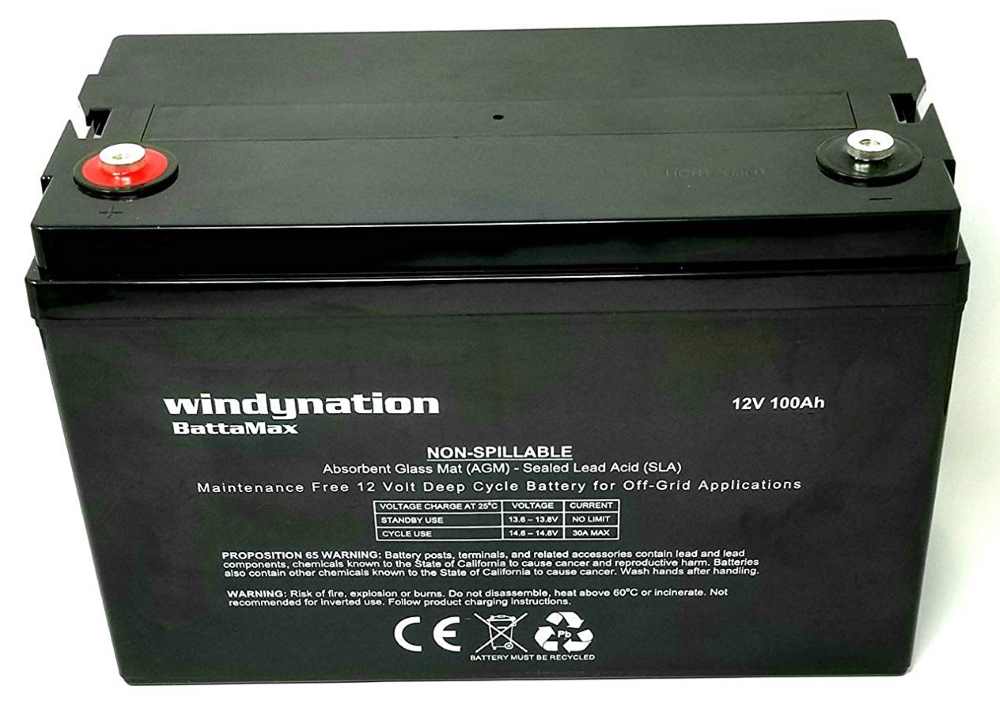It might seem dangerous to hook up to shore power while your RV battery is still connected. Many new RVers think it’s safer to disconnect an RV battery when plugged in, but you might be surprised to learn that’s not always the best choice. In most RVing situations, it’s perfectly safe to leave your house batteries connected. Staying connected keeps them charged and ready in case the campground electricity shuts off.
But let’s not get too far ahead of ourselves. The best way to really understand why you usually don’t need to disconnect an RV battery while plugged in, is to wrap your head around the main components of your RV’s power systems:
- RV batteries
- Shore power
- Inverter
- Converter
This article makes it easy for anyone to understand how RV power systems work. But in order to know why it’s ok not to disconnect an RV battery when plugged in, you also need to know about how your RV batteries get refilled. Keep reading to learn about both.
A good rule of thumb is to leave the batteries connected at all times EXCEPT when stored with no SP (shore power) connected.
“Battery Disconnect: On or Off?” @aether_one, iRV2 Forums
How RV Power Systems and Batteries Work Together
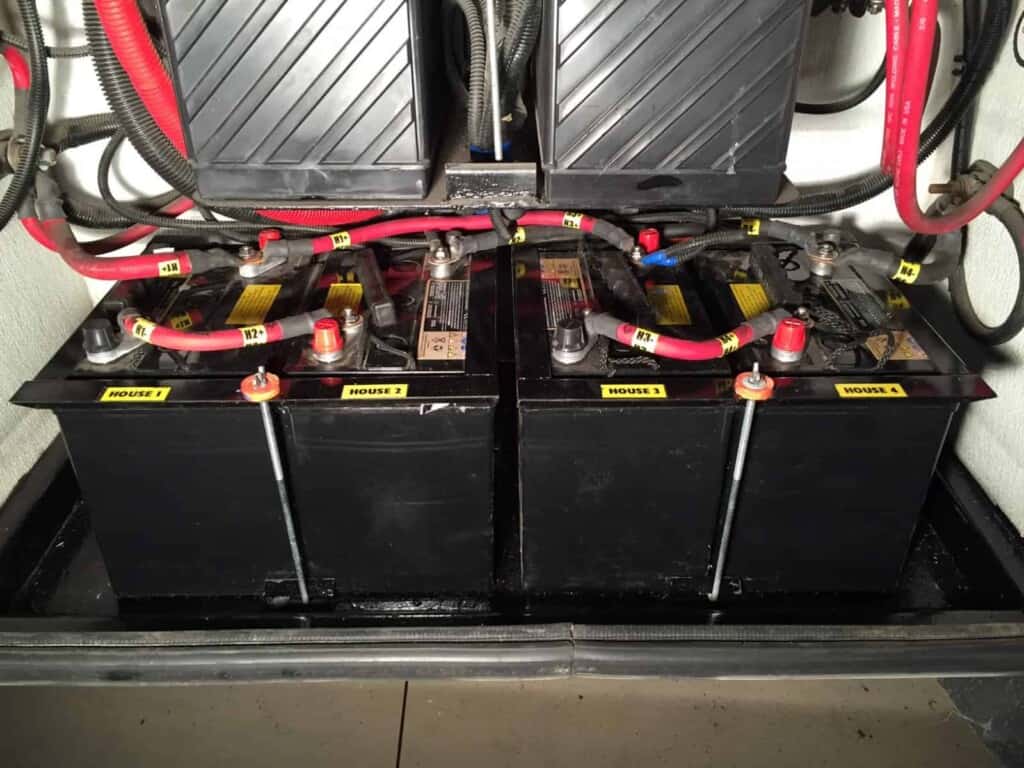
Let’s review all of the ways you get power into your RV from shore power and battery power.
RV Battery Basics
Most RVs on the road today contain anywhere from a single battery to larger battery banks. RVs with larger banks contain anywhere from two to ten or more batteries. Whatever the amount, those batteries are only storage units. They cannot generate any power on their own. RV batteries can only serve up stored electricity to connected components that ask for it.
Most RV batteries are fully charged at 14.4 volts. When the battery is depleted it can no longer perform its single, critical function. That function is powering devices. The battery must receive replenishment from some external source. This is the same whether your RV has Absorbed Glass Mat (AGM), flooded lead-acid batteries, lithium ion, or the latest lithium Iron batteries.
How Campground Pedestals (Shore Power) Move Electricity
Shore power can be referred to as “utility-provided electricity.” It can be delivered to your RV through a variety of methods. Usually it will be through a campground power pedestal. At a pedestal there are usually options for a 15, 20, and/or 30-amp circuit. In newer and upgraded RV campgrounds, a 50-amp circuit is usually available. All shore power systems deliver 120-volt AC (alternating current).
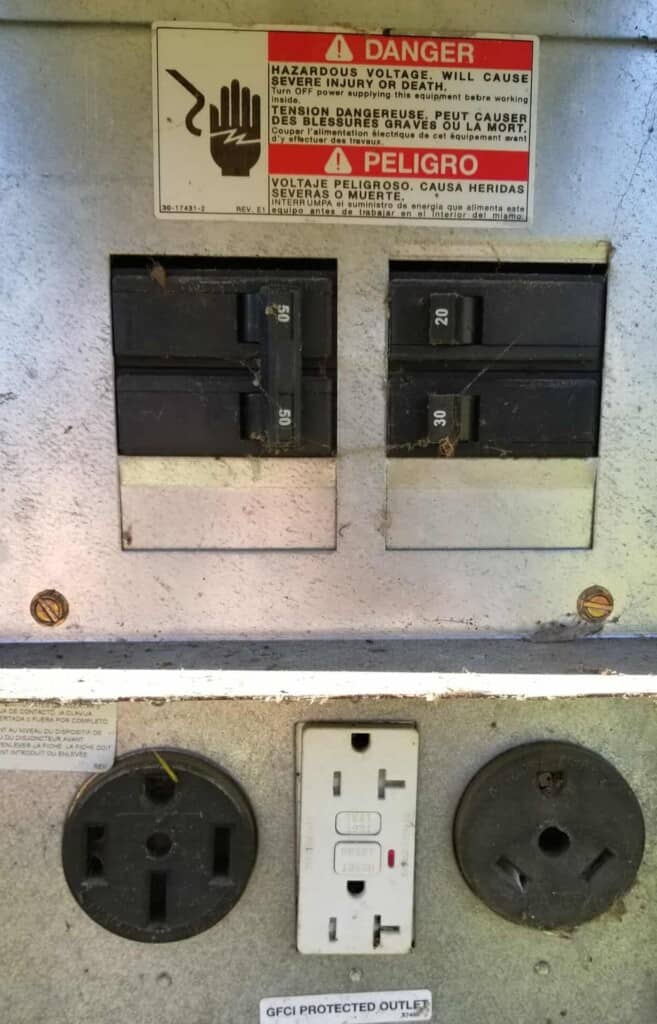
Contrary to popular belief, AC power doesn’t “travel further.” It is just easier to modify the line voltage via “step-up” and “step-down features.” For example, a transformer can allow power lines to transmit very high-voltage power. But that same transformer also reduces it to power suitable for your home, business, or RV. Most of the world’s electricity runs on alternating current (AC) instead of direct current (DC).
Your RV systems such as lights, leveling jacks, furnaces, slide-outs and, in most cases, even your refrigerator (if it is not a residential refrigerator) all run on 12-volt DC. Even your laptop likely runs on DC. The large power brick on the power cord between the typical 120-volt wall socket and the tiny plug that goes into the back of the laptop is actually a small converter. More discussion on that later.
What Do RV Inverters Do?
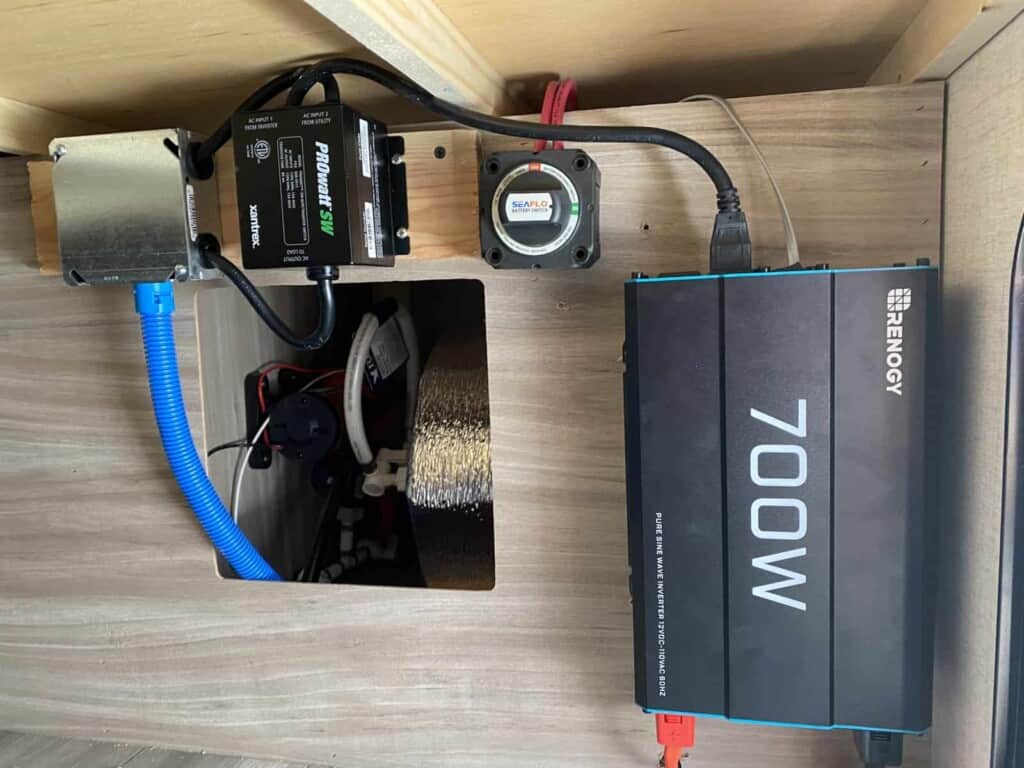
So now you know that all shore power is 120-volt alternating current (AC). Yet you also learned most of an RV’s systems are powered by direct current (DC). How is that even possible? Through an inverter!
An inverter manages the responsibility of converting stored 12-volt DC power to 120-volt AC. It powers those devices that do not run on DC power, such as your air conditioner, residential-style refrigerator and other typical household appliances. Not all RVs have inverters, nor do all RVs necessarily need them. It depends on how you use your RV.
For example if you are using computers frequently because you work from your RV, an inverter can be critical. You need it to provide AC power from the stored DC power. Inverters vary in the amount of power they can convert. They range in size from a small unit that you can carry in your car, to much larger systems that can provide a lot of power to big appliances. Inverters are almost always rated in watts. Knowing how much wattage your unit needs is to key to selecting the best inverter for your needs.
The Job of Your RV Converter

A converter (or “charger”) is the opposite of an inverter. Instead of providing AC power from DC, it turns 120-volt AC power into 120-volt DC power. Converters are generally buried in the guts of your RV for safety reasons. Your RV batteries need a source of 12-volt DC input to refill the power that has been used.
A converter typically doesn’t utilize any solar options. That’s because solar panels combined with a charge controller produce the proper amount of DC power for charging your house batteries.
But if your power is coming from either a generator (usually AC output) or from a shore power connection (also AC output), then it must be converted. The conversion is to the 12-volt DC format suitable to refill the batteries.
Remember the laptop we talked about earlier? That power brick is performing a similar function. It converts a wall socket’s AC power down to DC power that your laptop needs.
How Your RV Batteries Get Recharged
Whether you rely on RV solar power, running your generator, or stay plugged into ample 50-amp shore power, you still might be wondering: how do you get that power to refill your batteries?
Your RV batteries are replenished by the power that runs through cables connected to those batteries. There are as many ways to connect those cables to batteries as there are rigs on the road! But in general, something needs be connected to the RV batteries to run power from them over to your lights, slide-outs, and other components. That something must be connected from a power generation source to put power back into the batteries so that they can do their job. And that something is the converter.
Conclusion: Staying Plugged In to Shore Power is Better for RV Batteries, and You
Sure, you can always choose to disconnect your batteries while plugged into shore power. Some RV systems don’t require batteries to be connected in order for components to operate.
It all depends on what brand and model coach you have. Our gas powered Winnebagos also charge the batteries and run all the systems even with the coach battery disconnect switch in the Off position.
There are just too many different configurations to give a perfect answer to the OP. Some coaches need the coach battery switch in the on position when plugged in to shore power and some don’t.
“Battery Disconnect: On or Off?” @AKIQPilot, iRV2 Forums Member
But some RV electronics require a battery to be in the circuit in order to operate correctly. So depending on your RV’s wiring setup, without fully charged batteries you may be completely dependent on your converter to provide DC power to the lights and other DC items. And if shore power goes out after you disconnected your RV batteries, you will probably have two major issues:
- Your batteries will be completely depleted (which is not good for their health).
- You now have no power source for those 12-volt DC devices
This is why for most RVs, it’s just better to stay connected to shore power if you are actively using your rig. Keeping the batteries connected should keep the batteries topped up to their maximum capacity (if all connections work correctly). This ensures you always have power on demand, regardless of whether or not you are connected to shore power, an RV solar system, or a generator.
Pro Tip: You can expect a good 30 or 50-amp shore power connection to provide a much faster recharge for your batteries than you might get from a generator. Definitely faster than recharging RV batteries with solar.
The 3 Instances When You Should Disconnect an RV Battery That’s Plugged In to Shore Power:
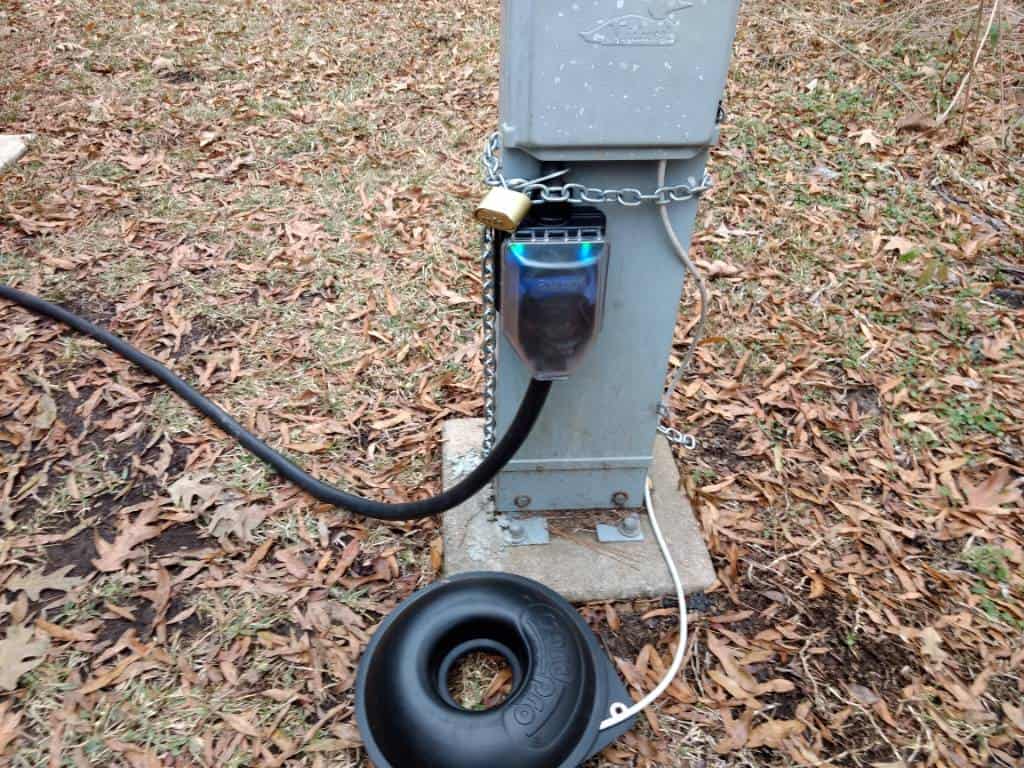
How let’s get to the heart of this discussion about disconnecting RV batteries while connected to shore power. In answer to the question ‘Should I disconnect my RV battery when plugged in?” the answer is that disconnecting RV batteries should only be reserved for three common instances:
In most cases, it’s just better to leave RV batteries connected for recharging purposes, and to have backup power in case the campground power grid goes down.
We hope you found our RV battery management tips useful. If you did (or did not), comment below. We want to know your suggestions for creating more helpful advice RVers can use.

